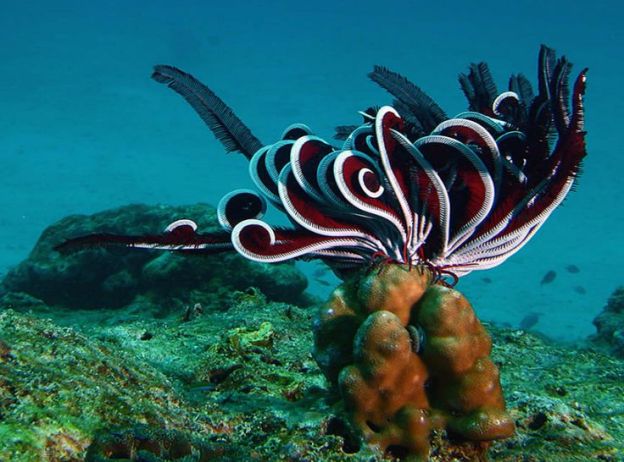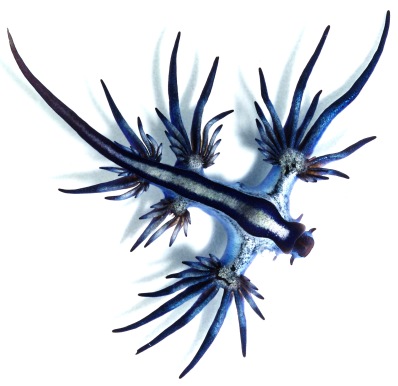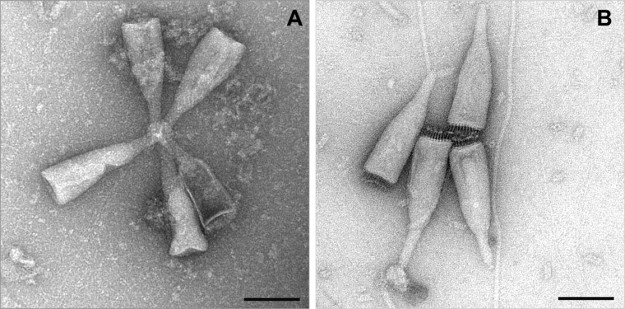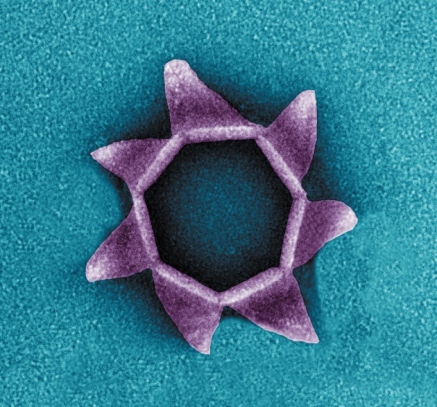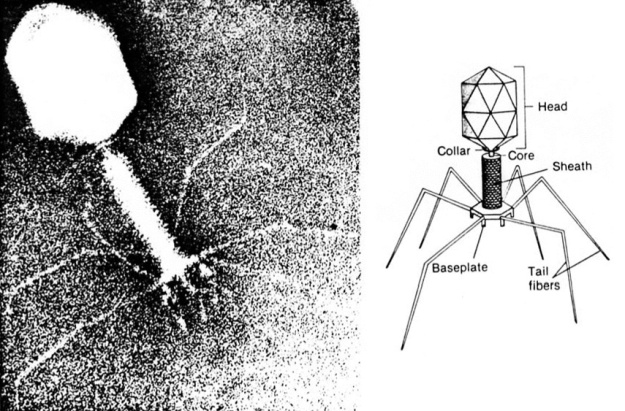Edited and updated as of 3/4/17. TL;DR: The popularly cited figure of 1% of the population being asexual is probably wrong, and the true fraction is probably higher. Determining this is hampered by the fact that asexuality is an umbrella term, and that most people still don’t know what asexuality is.
Content warning: discussion of sex.
An asexual is someone who does not experience sexual attraction. Unlike celibacy, which people choose, asexuality is an intrinsic part of who we are. Asexuality does not make our lives any worse or any better, we just face a different set of challenges than most sexual people. There is considerable diversity among the asexual community; each asexual person experiences things like relationships, attraction, and arousal somewhat differently. Asexuality is just beginning to be the subject of scientific research. [Asexual Visibility and Education Network, Overview]
Popular literature says that 1% of the population is asexual. Is this true?
The 1% figure comes from Anthony F. Bogaert, who published a 2004 survey of 18,876 adults in British households, who responded to the following survey:
I have felt sexually attracted to…
- Only females, never to males
- More often to females, and at least once to a male
- About equally often to males and females
- More often to males, and at least once to a female
- Only males, never to females
- I have never felt sexually attracted to anyone at all.
In the follow-up questions, they were asked: “How old were you when you first had any type of experience of a sexual kind – for example, kissing, cuddling, petting – with someone of the opposite sex?” (As well as for the same sex.) I believe that subjects saw that question after having answered the first one.
1% of respondents answered with (6), and this is where the “1% of people are asexual” number comes from.
Why am I not content with this number?
First of all, people sometimes frame this as “1% of the population identifies as asexual.” We have no idea if this is true.
That said, aside from being over a decade old, the question itself likely doesn’t represent the asexual (or potentially asexual) population. Many asexuals do experience sexual attraction, but extremely rarely (depending on how rarely, these people might consider themselves gray-asexual, or just functionally asexual with maybe a handful of exceptions.) Many asexuals experience romantic or aesthetic attraction, and it can be very difficult to distinguish between romantic and aesthetic and sexual attraction if your culture doesn’t give you the affordance for doing so. So even if the households surveyed represent the general population, I would still expect the 1% number to under-represent how many asexual people there are.
As a counter-point, it’s also certainly possible to have a low libido or low sexual interest as a result of a physical health-, mental health-, or something else-related, reason. While some people with this camp might permanently identify as asexual, others don’t, or might only realize that their low sexual interest isn’t as innate as they thought once they get treatment, or improve other parts of their lives. Late bloomers might also develop sexual attraction far after their peers. So we’d expect there to be some people who identify as asexual, but actually aren’t (or wouldn’t in better circumstances), as well.
Note that in a later piece, Bogaert says that as awareness of asexuality grows, he doesn’t know what the true number is either.
Kinsey’s “Group X”
Alfred Kinsey, the founder of modern sexology, created his famous 1-6 “Kinsey Scale” of heterosexuality to homosexuality. He also included “Group X”, a group he found to have “no socio-sexual contacts or reactions.” I haven’t read Kinsey’s work myself, but the Asexuality Wiki quotes from Sexual Behavior of the Human Female that:
| Group | % in “Group X” |
| Unmarried females | 14-19% |
| Married females | 5-8% |
| Previously married females | 5-8% |
| Unmarried males | 3-4% |
| Married males | 0% |
| Previously married males | 1-2% |
14-19% of unmarried women! (Obviously, there’s a selection effect here – if you’re asexual-aromantic, you’re much less likely to get married.) I don’t know how much of the population at the time fell into the married/unmarried/previously-married categories. Also, the data is old, and Kinsey may not have distinguished romantic and sexual attraction.
That said, it’s safe to say that if Kinsey’s population was anywhere near representative, >1% of respondents fell into “category X”. If the “married” and “unmarried” people were each 25% of the total, we’re talking 5.5-7.8% of people in “Group X”.
Other categories
A 2014 survey pf University of California system campuses, with respondents composed roughly evenly of both students and faculty/staff (~80,000 total), asked readers to check which term best described their sexual orientation, out of: asexual, bisexual, gay, heterosexual, lesbian, queer, questioning, or other (“please specify.”) 4.6% of respondents responded with “asexual”. While limited to college students and faculty, and not the question I would have asked, this still had by far the greatest sample size of any survey discussed here.
A 1983 study by Paula S. Nurius of 689 mostly university students from New York, Kansas, Wisconsin, Hawaii, and California found 10% of women and 5% of men were “asexual”, having on low scores of both homosexual and heterosexual preferences according to the Sexual Activity and Preference Scale (SAPS). (They also found that this group was the most likely to be depressed and have self-esteem problems. 😦 ) I can’t find a copy of the SAPS online, so I don’t know if it clearly distinguishes romantic and sexual preferences, or doesn’t as in Bogaert’s metric, but it’s still already higher than 1% at least in the college population.
Two reasons why surveying for asexuality is hard
1) Asexuality is an umbrella term
The asexual label includes a lot of different identities. Most people think of “intimate relationships” as a single concept, the point you happen to be at on the relationship escalator.
But actually they’re two things (tumblr calls this the “split attraction model”):

Although, even more realistically, it’s more of a smorgasbord:

A great deal of people are either aromantic but sexual, or asexual but romantic. This means that they’re grabbing some of the dishes from the “romance” side and almost none from the “sexual” side, or vice versa. I think this is tough because the romantic/sexual distinction isn’t very clear if you haven’t thought about it before. Our culture describes cuddling as foreplay, and that all relationships move on an escalator from dating to sex to marriage to babies. But while Clickhole tells us that kissing is sex, many aces will clarify that there is, in fact, a big difference between all of these things.
This is complicated in many cases:
- Later in the above survey, when Bogaert calls kissing, cuddling, and sexual intercourse all “experiences of a sexual kind.” (To be fair, this could also be due to a shift in the meaning of the word “sexual”.)
- When a survey asks if the reader is “heterosexual, homosexual, bisexual, or asexual”, and that’s the only question about sexual or romantic orientation. (Which one does a romantic ace choose? Does the survey-maker know about the split-attraction model? Aren’t their meaningful relationships more important than their hypothetical sex life?)
- When a survey asks about one kind of behavior, like not having a libido, and assumes that this means the same thing as asexual.
- Asexuality is usually assumed to be a personal preference, but if you’re raised in a culture that says Not Having Sex Is Good And Virtuous, you’re more likely to think that you don’t want sex if you also think of yourself as Good And Virtuous.
2) Most people don’t know what asexuality is
By way of analogy, let’s imagine a world where food intolerances exist but are completely unknown and unaddressed. If you eat a sandwich every day for lunch and get sick every afternoon, you’re probably going to… keep eating sandwiches. You’re not going to think “hey, maybe I’m gluten intolerant,” or even, “maybe I should try eating something different for lunch?” You might notice that on a day you skip lunch, you don’t feel sick, but you’re going to keep eating sandwiches – a sandwich is as good a lunch as any, and you don’t have a framework for any counter-evidence.
This is hermeneutic injustice, also known as “why didn’t anyone tell me that there was a word for that?” In our world, asexuality is, of course, a known concept – but it’s not well known or accepted enough for everybody to be able to know if they are or aren’t that.
For instance:
- There’s a great deal of societal pressure to date, get married, have sex, etc., and people might do these without really wanting to. And then say “well, of course I have a sex drive, I mean, I’m married, after all,” never noticing that their beliefs are circular.
- The typical mind fallacy means ace people may assume that everybody thinks the same way they do about sex or romance, and date people anyways.
- People may have heard the word “asexual”, but not understand that, e.g., you can be romantic and asexual, or that it’s not only a trauma response or medical symptom, or that you can have a high libido and be asexual.
- If you haven’t heard of people who are happy not having sex, you probably haven’t considered that you might be happy not having sex.
- This diagnostic criterion from the 2013 DSM-5 for Female Sexual Interest/Arousal disorder (also present for male hypoactive sexual disorder.) While it’s nice that asexual identity is no longer pathologized the same way it was so very long ago as 2012, it’s also a useless exception if people don’t know what asexuality is.

I subscribe to Ozy’s view of identity labels as being about communicating preferences. So the question I’d like to be able answer is “how many people are there who either identify as asesxual, or would find it useful given the societal leeway to do so?”
Alternatively, asexuality is also commonly described as “lack of sexual attraction to other people”. There’s certainly room for nuance there, but it’s still pretty useful.
Behavior-based surveys
Because of the above, I’d like to explore options other than asking “are you asexual?” and scaling up.
One thing that seems to work well in sociology is asking about behavior, not self-identifiers. For instance, asking men if they are gay will get you one answer. Asking men if they sometimes have sex with other men gets a larger pool – perhaps they’re closeted, bisexual, used to identify as gay, or regularly have ‘bud sex’ with their guy pals but identify as straight. Self identification is hard, behavior is a little more straightforward.
Because asexuality is an umbrella term, asking about behavior is difficult. The Asexuality Identification Scale (AIS) seems to be our answer – researchers came up with a bunch of question about attitudes towards sex (EG: “My ideal relationship would not involve sexual activity, 0 (disagree strongly) – 5 (agree strongly)”), gave them to ace-identified participants from the Asexual Visibility and Education Network, and chose the most predictive ones. 93% of these subjects got a score above 40 on the resulting 12-item questionnaire (the questions are available here.)
This seems pretty good to me. People who hang around AVEN aren’t necessarily representative of the larger ace population, and they’re selected for knowing that they’re asexual, but it is a popular central message board for ace people, and acknowledges (and presumably contains) ace people of a variety of different stripes. So I feel reasonably comfortable saying that if respondents answer honestly, this scale will catch most (~90%) of the ace or potentially ace people.
(Answering the questions honestly is tricky, though. I suspect that many people who are asexual but haven’t realized it yet will lean towards the sexual end of the test scores, and won’t after realizing it. I suppose the way to test this is to ask an enormous number of people to take the test, then have them do it again five years later, and see if any of them have started identifying as asexual in the meantime.)
In coming up with the questions for this quiz, they compared the 176 asexual participants to 716 non-ace participants, recruited off of Craigslist / psychology research websites / their university study pool. Of those, 4% scored above 40.
This could be read as the false positive of the test. I would like to offer a counter proposal: This is closer to the baseline rate of asexuality in the general population. Unfortunately, it doesn’t seem like anybody else has given this survey to a large random sample group.
One reason this might not represent reality is because it seems possible that advertising for the study mentioned that it was a study on sexual behaviors, and I imagine a lot of people closer to the asexual end of the smorgasbord would say “nope, not really my area of expertise” and move on, leaving them under-represented in the quiz. Alternatively, maybe they’d think “well, I appear to have a different relationship with sex than other people I know, so I should take this survey”, and they’d be over-represented. I don’t know how the survey was presented.
Designing better surveys
If you’re making a survey and really only care about people’s self-identified sexuality, you can still do better than most people!
Clearly distinguishing romance and sex
The 2014 AVEN community survey found that only 20% of asexual-identified survey respondents also identified as aromantic. If the survey respondents (mostly people from tumblr, as well as regular AVEN community members) is representative, this might indicate that 4 out of 5 asexuals do have romantic interests.
There isn’t a website like AVEN specifically about aromanticism, and sexual aromantics seem unlikely to be on an asexuality website. So it’s also hard to say what percent of aromantic people are also asexual.
Better accounting for asexuals in survey questions
A website I follow did a participant demographic survey in 2014, then another participant demographic survey in 2016. Most of the questions were the same between the two, but at least one changed: In 2014, the survey asked what the reader’s sexual orientation was. The results were:
- Asexual: 59, 3.9%
- Bisexual: 216, 14.4%
- Heterosexual: 1133, 75.4%
- Homosexual: 47, 3.1%
- Other: 35, 2.3%
In tallying the data, Scott Alexander wrote: “[This question was poorly worded and should have acknowledged that people can both be asexual and have a specific orientation; as a result it probably vastly undercounted our asexual readers]”
- In the 2016 survey, it asked about orientation. Then it asked if the reader was asexual.
- Heterosexual: -5.000% 1640 70.400%
- Homosexual: +1.300% 103 4.400%
- Bisexual: +4.000% 428 18.400%
- Other: +3.880% 144 6.180%
(The +/- represent changes from the 2014 survey.)
Are you asexual?
- Yes: 171 7.4%
- No: 2129 92.6%
I don’t think that we can necessarily assume that 7.4% of the general population is asexual, generalizing from the self-selected readers of one website. I do, however, want to draw your attention to the fact that reported rates of asexuality nearly doubled when the question was asked separately! I think this should be common practice in surveys collecting data on sexual orientation.
It could even be improved upon – someone who’s both gay and asexual might call themselves homoromantic, but not homosexual – but I think it’s a good starting ground. Our hypothetical respondent is more likely to choose “homosexual” on the grounds that it’s partially right, and that their asexuality will be acknowledged in the next question.
A “check all that apply” box is another possible solution.
Conclusion
| Limitations | % of population that is asexual | |
| Bogaert | From 2004, didn’t distinguish romantic/sexual orientation. | 1% |
| Kinsey | From 1953, may not have distinguished romantic/sexual orientation. Not necessarily random. | ~5.5-7.8% (1.5-2% of men, 9.5-13.5% of women) |
| Nurius | From 1983, may not have distinguished romantic/sexual orientation. Of mostly college students. | 7.5% (5% of men, 10% of women) |
| Asexual Identification Score control group | Not necessarily completely representative. | 4% |
| University of California system survey | Of college students and staff/faculty. | 4.6% |
(While the LessWrong reader survey was non-random (with a decidedly young/liberal/male/white/tech-y bent), at 7.4% self-identified asexual readers, it’s interesting to note that it lines up with some of the higher bound estimates for the general population.)
I feel pretty comfortable saying that 1-8% of the population is asexual, maybe closer to 4-8%. If I had a lot of money to put toward this right now, I would have some college students give the Asexual Identification Scale to a large random sample of people, and be more confident in their answer as the correct one.
Check back soon for practical ideas on making your data collection more representative of asexual populations.


